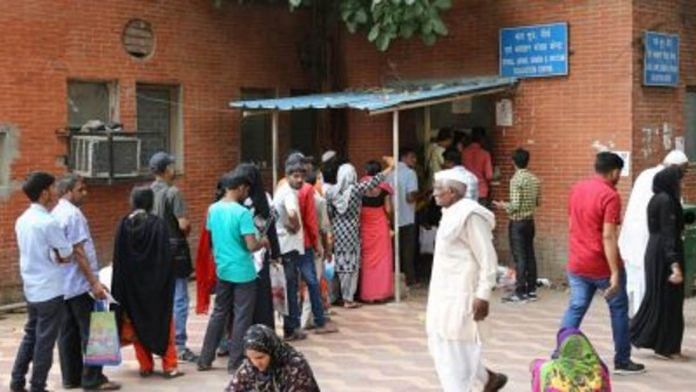New Delhi: Early transfer of severe cases to ICU, identifying critical patients early, and increasing ICU beds at some hospitals are among the recommendations made by four committees set up by the Delhi government to check Covid mortality in the national capital.
The details, which were shared by the government in a media statement Wednesday, were based on the reports submitted by the committees at a meeting attended by Chief Minister Arvind Kejriwal earlier in the day.
The committees, comprising doctors, members of the Delhi health department, and other government officials, were set up by Kejriwal last month to study Covid-19 deaths at 10 hospitals.
The hospitals, which officials say comprise “a significant percentage of the total deaths in Delhi”, include five private hospitals and as many government facilities: Lok Nayak Jai Prakash Narayan Hospital, GTB Hospital, Safdarjung Hospital, Max Saket, Sir Ganga Ram Hospital, RML Hospital, Jaipur Golden Hospital, Sir Balaji Action Medical Institute, Fortis Escorts, and St. Stephen’s Hospital. There are altogether 131 hospitals in the capital that have Covid beds, according to the government’s DelhiFightsCorona dashboard.
The committees’ mandate was to suggest recommendations to bring down the fatalities, with the chief minister looking to eliminate Covid deaths in the national capital.
“On the suggestions of the committees … measures to contain ward deaths and provide the best services to Covid patients in the hospitals will be taken on behalf of the government,” said a senior Delhi government official.
Delhi has registered 4,044 Covid-19 deaths so far, including 11 on Friday, according to the latest health bulletin issued by the Kejriwal government.
Also read: India’s Covid response is ‘flying blind’ without accurate deaths data, experts claim
The recommendations
The four committees set up by the Delhi government have offered hospital-wise recommendations that they believe can help bring down Covid deaths, and improve patient care.
The government detailed some of the recommendations in their statement to the media.
For GTB, recommendations include equipping Covid-19 wards with high-flow nasal oxygen (HFNO)/BiPAP machines for respiratory aid, and ensuring timely recognition and transfer of sick patients to Intensive Care Units (ICUs). Increased use of convalescent plasma therapy has been advised as well.
HFNO has also been recommended for Sir Balaji Action Medical Institute and Jaipur Golden Hospital to “help in improving patient outcome”.
For Safdarjung Hospital, the committee has recommended using “early warning scorecards” to ensure prompt detection, and shifting of severe Covid patients from wards to critical care units. The experts have also said the hospital may increase the number of Covid ICU beds “in case there is a second wave”.
At Lok Nayak Hospital, Delhi’s biggest Covid facility, experts have called for high-risk cases to be transferred to ICU/high-dependency unit (HDU) at the earliest. At Ganga Ram Hospital, experts said there is a need to detect complications in patients on prolonged ventilation, also urging proper follow-up.
The chief minister, the government said in the statement, emphasised at the meeting that steps must be taken to bring Delhi’s Covid deaths to zero. The government also said in the statement that the experts had found a lower death rate in the hospitals as compared to earlier.
As part of its efforts to check Covid fatalities, the Delhi health department, on 16 July, also sent hospitals a checklist on different steps they can take.
Covid fatality figures in the capital have been under the lens over discrepancies in the numbers issued by the government and those released by designated coronavirus funeral sites and civic agencies. The mismatch has led to allegations of Delhi under-reporting Covid deaths, but officials of the Kejriwal administration have denied the charge, blaming the discrepancies on the time it takes for the figures to be tallied and verified by the audit committee.
Also read: Covid death data mismatch continues in Delhi — difference of over 500 in govt, funeral figures






